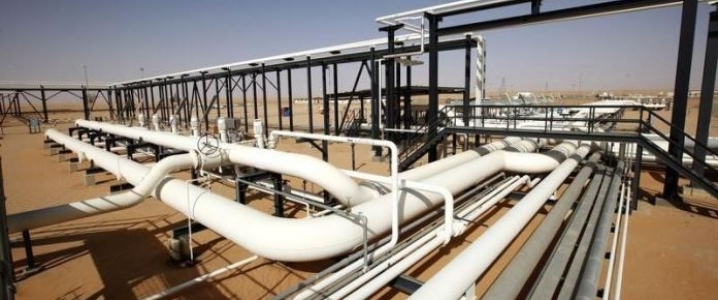Libya’s Largest Oilfield Offline, Amid Uncertainty, ISIS Beheadings

Libya’s largest oilfield, the Sharara, remains offline despite contradictory news reports this morning suggesting that exports would resume.
Weighing in on oil price uncertainty, market watchers have been in a state of confusion over varying reports over the past three days as to the status of exports from Libya’s biggest producing oilfield.
Earlier this morning, news reports citing National Oil Company (NOC) sources said production had resumed at Sharara, following a three-day blockade of the pipeline that feeds crude to Zawiya export terminal.
Reports said that the Tripoli-based NOC—recognized by the UN as the legitimate NOC–announced it was lifting the force majeure on shipments of oil pumped from the country’s largest oilfield—the Sharara—to the Zawiya port.
However, a Reuters report citing unnamed Libyan officials, the field remains offline for unclear reasons. The same report noted that operations had restarted yesterday at least once, for a short period.
“They open one valve, they close the other,” one unnamed sources told Reuters. It was suggested that “negotiations” were underway for a resolution, though the nature of the problem remains undefined.
As rivalry between two governments, two ‘national oil companies’, a multitude of armed factions and ISIS continues, the future of Libyan exports remains highly uncertain.
The blockade was the latest in a string of disruptions that have suspended production at Sharara several times this year already.
Just two weeks ago, an attack on a control room at Zawiya caused the shutdown of production at Sharara. It later surfaced that the attackers were protesting the arrest of four Libyans in Saudi Arabia in connection to a kidnapping of Egyptian diplomats in Tripoli.
Sharara’s production has also been interrupted by militants blocking the pipeline to Zawiya and theft of vehicles, which prompted NOC to tighten security.
Sharara pumps about 270,000/280,000 bpd and its restart last December has been key to Libya’s oil output growth, which exceeds 1 million bpd. The field supplies around one-quarter of Libya’s total output and has experienced several production stops since its restart.
Libya boasts the biggest crude oil reserves in Africa, but the civil war that ravaged the country after the removal of Muammar Gaddafi crippled its oil industry. Before the war, Libya produced 1.6 million barrels of crude daily. By the end of this year, the Tripoli-based NOC aims to hit a target of 1.2 million bpd – short of the pre-war rate but double the March 2017 daily average.
Rival factions in Libya’s east have attempted to sell oil on their own through the Benghazi-based NOC, which is not recognized by United Nations Security Council, which views the Tripoli-based NOC as the only legitimate exporter of Libyan oil.
It is only a fragile alliance and an even more fragile game of balancing power that is keeping Libyan oil flowing. The Libyan National Army (LNA), headed by powerful General Khalifa Haftar, is aligned with the eastern government and parliament. Haftar is responsible for freeing up ports that had been blockaded for years and allowing the Tripoli-based NOC to export.
The reported beheading of 11 people at a central Libyan checkpoint controlled by Haftar’s LNA on Wednesday also indicates that the conflict to control the country’s oil wealth is further intensifying.
Related News
Related News

- Keystone Oil Pipeline Resumes Operations After Temporary Shutdown
- Biden Administration Buys Oil for Emergency Reserve Above Target Price
- Freeport LNG Plant Runs Near Zero Consumption for Fifth Day
- Enbridge to Invest $500 Million in Pipeline Assets, Including Expansion of 850-Mile Gray Oak Pipeline
- Mexico Seizes Air Liquide's Hydrogen Plant at Pemex Refinery
- Evacuation Technologies to Reduce Methane Releases During Pigging
- Editor’s Notebook: Nord Stream’s $20 Billion Question
- Enbridge Receives Approval to Begin Service on Louisiana Venice Gas Pipeline Project
- Mexico Seizes Air Liquide's Hydrogen Plant at Pemex Refinery
- Russian LNG Unfazed By U.S. Sanctions




Comments